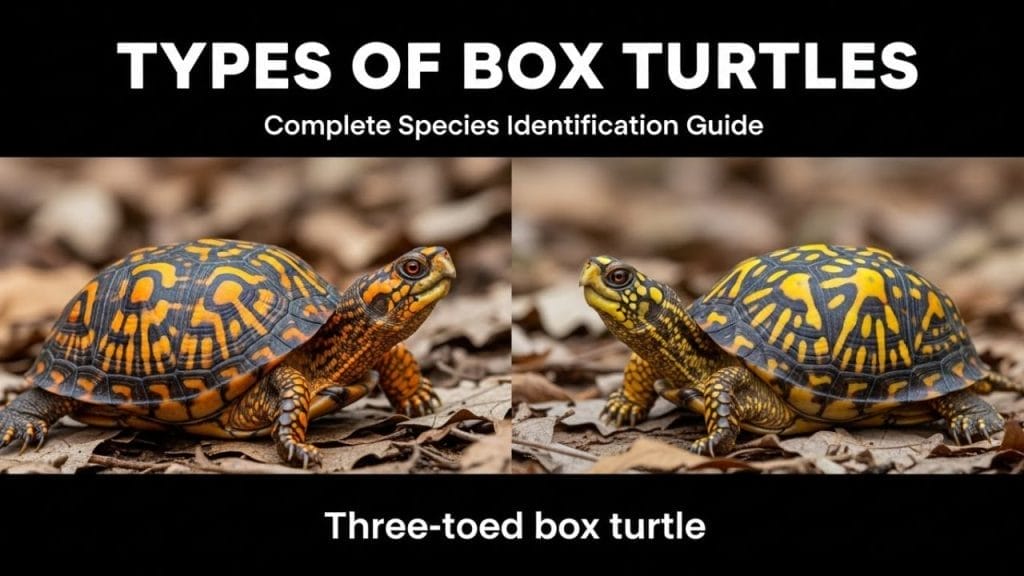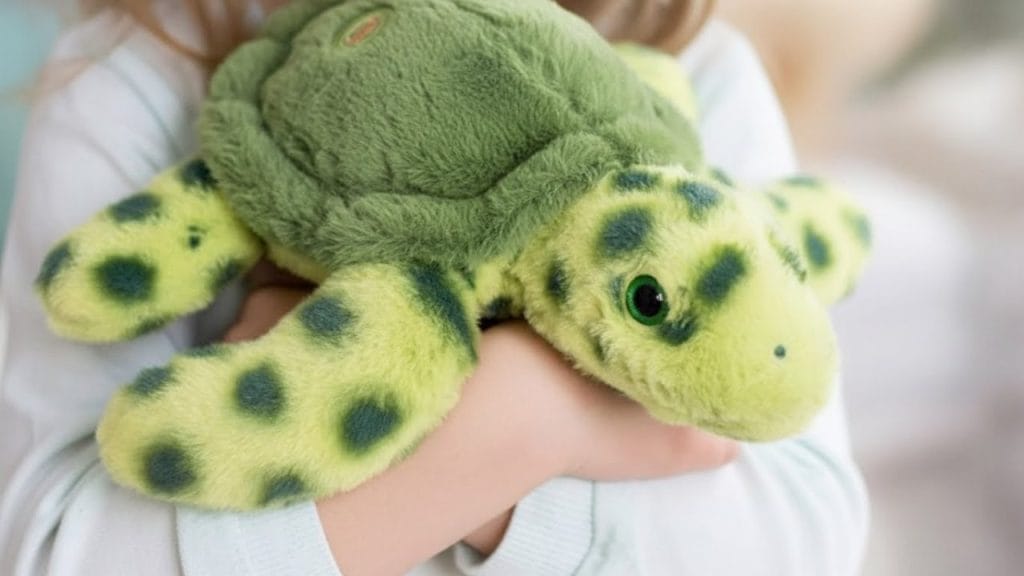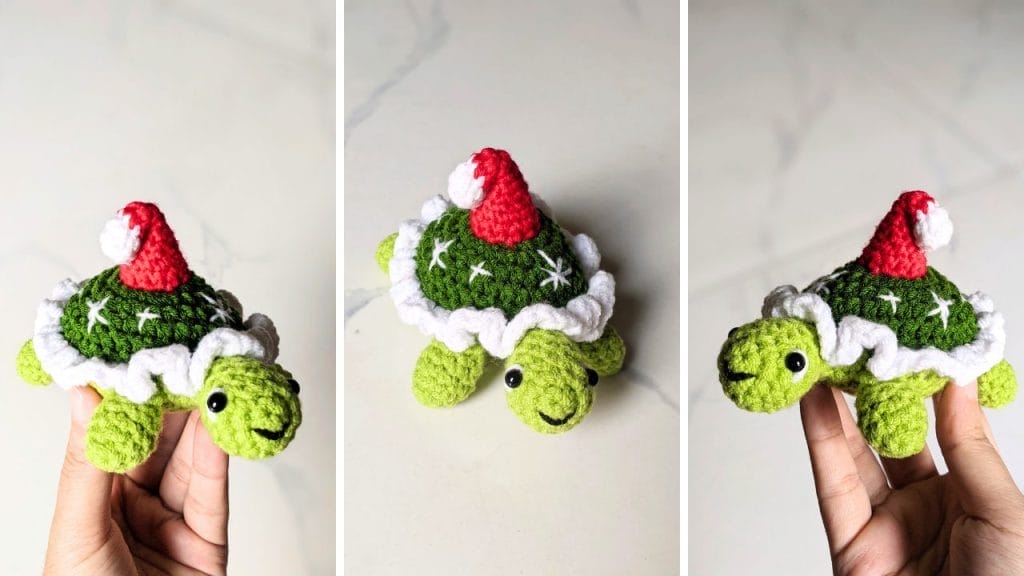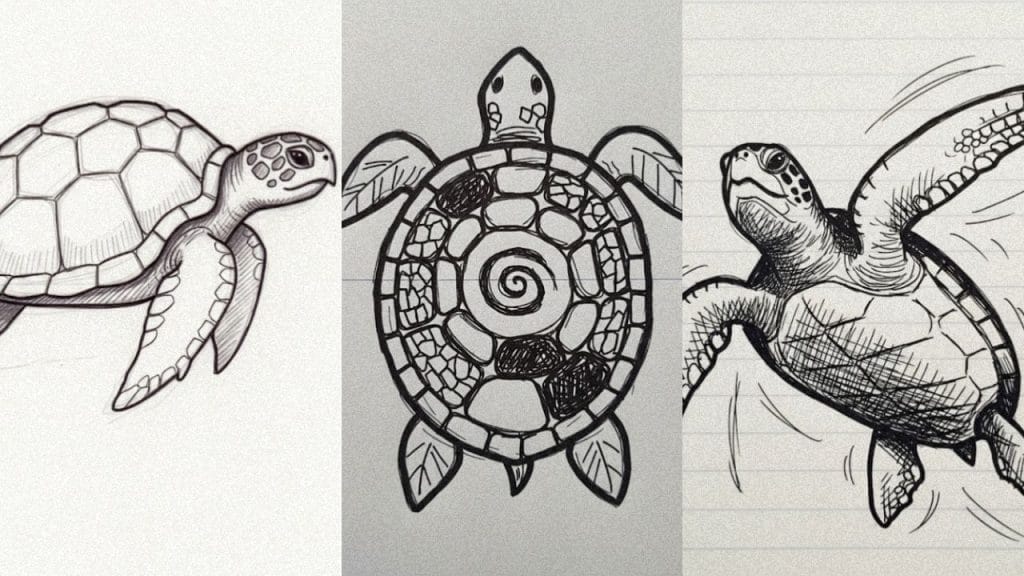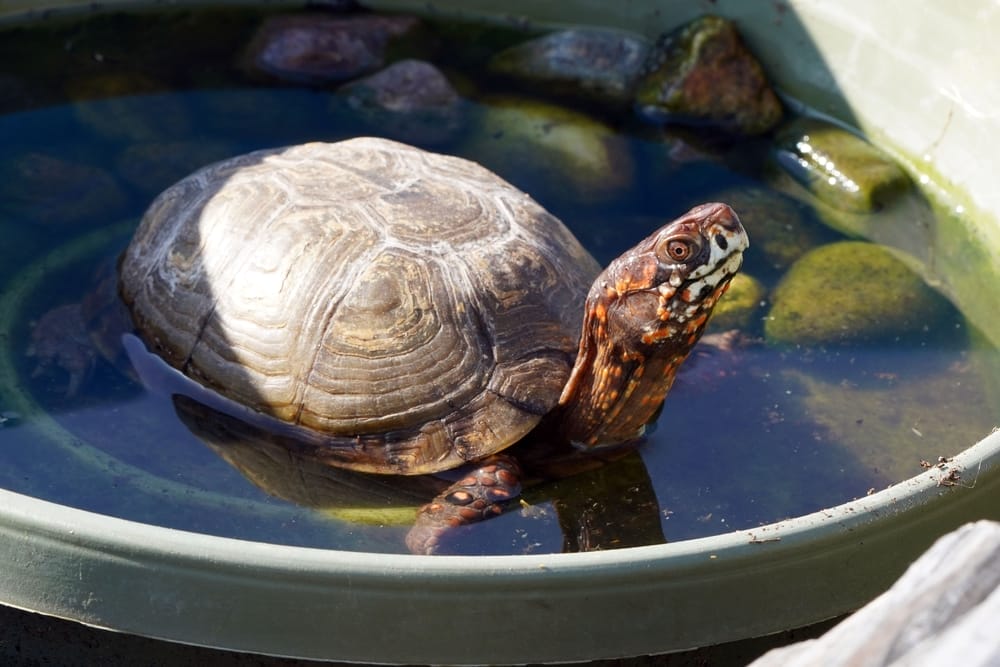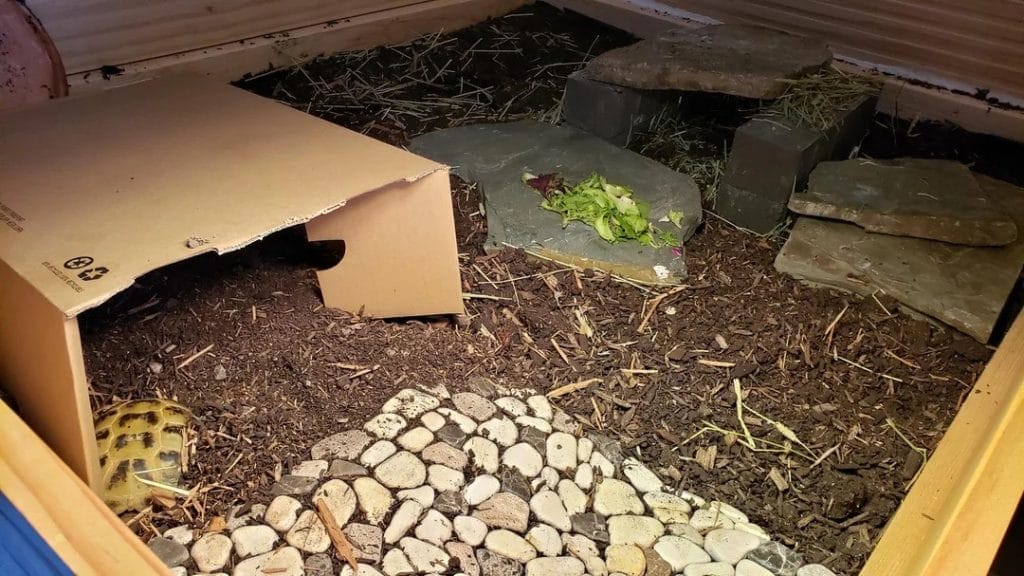Albino Red-Eared Slider 101: Essential Care Tips for Rare Turtle Owners

This post was created with help from AI tools and carefully reviewed by a human (Muntaseer Rahman). For more on how we use AI on this site, check out our Editorial Policy.
So you’ve seen an albino red-eared slider and now you’re hooked.
I get it—these turtles look like they swam straight out of a fantasy movie with their ghostly white shells and pink eyes.
The first time I saw one at a reptile expo, I literally stopped mid-step.
It was like someone had bleached a regular slider and given it ruby eyes.
Everyone around me was snapping photos like they’d spotted a celebrity.
But here’s the thing: owning one isn’t quite the same as caring for a regular slider, and if you mess up the basics, you’re in for a rough time.
I’ve spent weeks digging through research papers, vet forums, and breeder experiences to separate the myths from reality.
Because there’s a LOT of bad information out there about these rare turtles.

What Makes Albino Red-Eared Sliders Different?
Let’s start with the obvious: they’re ridiculously rare.
The odds of an albino red-eared slider being born in the wild? About 1 in 10,000.
That’s lottery-winner rare.
To put that in perspective, you’re more likely to get struck by lightning in your lifetime than to stumble across a wild albino slider.
Most albino sliders you’ll find today are captive-bred descendants from turtles collected in the 1950s.
Wild albinos don’t usually make it past their first birthday because their bright coloring makes them predator bait.
Imagine trying to hide from a hawk when you’re basically glowing white against dark pond water.
Not great odds.
The albinism comes from a genetic mutation that stops melanin production.
This gives them that pale, almost translucent skin and those distinctive pink or red eyes you see.
The pink eyes aren’t actually pink—you’re seeing the blood vessels in the retina through the transparent iris that has no pigment to block the view.
Kind of creepy when you think about it, but also fascinating.
How They Look Different From Regular Sliders
Regular red-eared sliders have that iconic green shell with yellow markings and, of course, those red stripes behind their eyes.
Albinos? Completely different vibe.
Their shells range from cream to pale yellow—almost yellow colouration with that translucent quality.
Instead of dark green skin, they have peachy-white or pale yellow skin that almost looks see-through in certain lighting.
The red stripe is still there, but it’s way more subtle—more of a peachy-pink smudge than a bold red mark.
And those eyes? They’re what really grab people.
Depending on the lighting, they can look anywhere from pale pink to deep ruby red.

Personality Differences? Not Really
In terms of behavior, albino sliders are very similar to regular red-eared sliders—curious, like to bask, swim, and explore.
They’re not some delicate, shy mutation.
They have the same personality as their green cousins: bold, food-motivated, and surprisingly interactive.
The one exception: they can sometimes be more sensitive to light due to their pink eyes, preferring dimmer lighting at times, especially right after basking.
Think of it like how your eyes need a minute to adjust after staring at your phone screen in the dark.
The Biggest Myth You Need to Stop Believing
Can Albino Sliders Handle Sunlight?
Here’s where people get confused.
You’d think albino turtles would shrivel up like vampires in the sun, right?
I mean, we’ve all heard about albino humans needing SPF 1000 sunscreen and staying out of direct sunlight.
So naturally, everyone assumes the same applies to turtles.
Wrong.
Albino red-eared sliders can bask for many hours a day and have no problems living outside in warmer climates.
They actually attract more UV rays when basking because of their bright skin.
It’s like wearing a white shirt versus a black shirt on a sunny day—the white reflects more visible light but doesn’t block UV any better.
Actually, for turtles, it might even help them absorb more of what they need.

Why the Confusion Exists
The myth probably comes from conflating different types of albinism across species.
In mammals (including humans), lack of melanin means no protection from UV radiation, leading to severe sunburns and increased skin cancer risk.
Albino animals in the wild also lack protective camouflage and are easier targets for predators.
But here’s what people miss: turtles have SHELLS.
That hard, protective shell is doing a lot of heavy lifting that mammal skin can’t do.
Albino snakes, for example, can remain in sunlight for several hours with minimal harm.
Reptiles are just built different.
The Real UV Situation
Now, I’m not saying albino sliders are invincible.
Their skin does transmit more UV than pigmented turtles, and their eyes can be more sensitive to both UV and visible light.
This is real.
But the difference is they still NEED UVB for vitamin D3 production, just like any other slider.
Red-eared sliders require UVB to maintain calcium homeostasis and prevent metabolic bone disease.
Without it, their shells get soft, their bones weaken, and they eventually die.
So you can’t just skip the UVB lighting because your turtle is albino.
Smart UVB Management for Albinos
The key is following minimum safe distances from bulbs and making sure they can’t bask closer than recommended—typically about 10-12 inches for fluorescent tubes.
Use the light and shade method so your turtle can self-regulate exposure and never be forced to move through lit areas.
Think of it like giving them sunglasses and shade options rather than locking them in a dark basement.
You can diffuse the light by placing fine mesh between the bulb and basking area, or add fake plants for cover.
One turtle keeper I spoke with mentioned their albino would often bask with just part of its body exposed, keeping its head tucked under a leaf while the shell soaked up rays.
Smart turtle.

Outdoor Time: Yay or Nay?
If you live in a warmer area, your albino can absolutely go outside—about 5 hours a week of natural sunbathing meets their UVB needs.
Natural sunlight beats artificial lighting every single time.
But there are catches: predation risk and the danger of overheating if there’s not enough shade.
A hawk doesn’t care that your turtle cost $200.
And if your albino overheats without shade access, that can be fatal.
So if you’re doing outdoor time, you need secure enclosures with both sun and shade areas, and you need to supervise.
This Hilarious Turtle Book Might Know Your Pet Better Than You Do
Let’s be real—most turtle care guides feel like reading a textbook written by a sleep-deprived zookeeper.
This one’s not that.
Told from the snarky point of view of a grumpy, judgmental turtle, 21 Turtle Truths You’ll Never Read in a Care Guide is packed with sarcasm, sass, and surprisingly useful insights.
And hey—you don’t have to commit to the whole thing just yet.
Grab 2 free truths from the ebook and get a taste of what your turtle really thinks about your setup, your food choices, and that weird plastic palm tree.
It’s funny, it’s honest, and if you’ve ever owned a turtle who glares at you like you’re the problem—you’ll feel seen.
Tank Setup: Don’t Cheap Out Here
This is where a lot of people fail before they even get started.
They see a cute baby albino slider in a tiny tank at the pet store and think, “Oh, I can keep it in that 10-gallon tank I have in my garage.”
No. Just no.
Size Requirements
Plan on at least a 75-gallon tank for a single adult.
Yeah, I know that sounds huge.
That’s because it IS huge.
But these turtles can grow over 12 inches long, and cramming them into a tiny tank is like asking you to live in a closet.
Would you want to spend 30 years in a closet? Didn’t think so.
Follow the 6 inches of aquarium floor per 1 inch of turtle rule.
So a 9-inch turtle needs 54 inches of floor space minimum.
Let me break down what you’re looking at over time:
Hatchlings can start in a 20-gallon tank, juveniles need at least 40 gallons, and adults need 75-100+ gallons.
Some people skip the starter tanks and just go straight to the 100-gallon setup.
More money upfront, but you’re not buying three different tanks as your turtle grows.
I’ve seen people use everything from traditional glass aquariums to modified plastic tubs, outdoor ponds, and even koi tubs.
One creative owner I read about used a pre-formed plastic pond liner indoors—looked way cooler than a basic tank.
These space requirements apply to all red-eared sliders regardless of color morph—see our comprehensive red-eared slider care guide for complete housing specifications and setup details.

Water Depth
Fill the tank to about 1.5-2 times their shell length.
Red-eared sliders are excellent swimmers and love to dive.
The more depth you give them, the happier they are.
Some people worry about baby turtles drowning in deep water, and I get that fear.
But here’s the reality: too little water is actually more dangerous because if they flip upside down, they can’t right themselves.
When the turtle is a stronger swimmer, you can add a lot more water.
Start conservative with babies (maybe 4-6 inches deep), then increase as they grow.
Water Temperature
This one’s critical and people screw it up all the time.
Water temperature needs to be 75-82°F (some sources say up to 85°F).
Not room temperature. Not “whatever my tap water is.”
Heated. Consistently.
Young turtles will literally die if the water isn’t heated into the upper seventies or lower eighties.
A friend who breeds turtles learned this the hard way—lost an entire clutch of babies because he didn’t heat the tanks.
Now he heats everything religiously.
Get a submersible water heater—this isn’t optional.
You can find decent ones for $20-30, and they’re worth every penny.
Get a separate thermometer too so you’re not just trusting the heater’s built-in gauge.

Basking Area Temperature
Basking spot should be 80-95°F, ideally in the low 90s.
Too hot and they won’t bask (meaning no UVB absorption), too cold and they’ll get sick.
It’s a Goldilocks situation—you need it just right.
The basking area needs to be easily accessible.
For baby turtles, floating docks work well.
For adults, you can use stacked smooth rocks, sloped gravel, wood, or commercial turtle docks.
Just make sure whatever you use is secure and won’t shift around.
I’ve heard horror stories of turtles getting trapped under decorations that tipped over.
Substrate: Skip It
With red-eared sliders, it’s recommended to have a bare bottom tank—no substrate.
I know substrate looks nice, but it becomes a nightmare to clean.
Turtles are messy eaters and poop machines.
Substrate just traps waste and makes your filter work overtime.
Bare glass or acrylic is way easier to maintain.
Lighting: Where Most People Fail
Lighting is probably the most confusing part of turtle care for beginners.
You need multiple types of light doing different jobs, and if you get it wrong, your turtle suffers.
Let me break it down in a way that actually makes sense.

The Three Types of Light Your Turtle Needs
Red-eared sliders need three elements from light: UVA rays, UVB rays, and heat.
Each does something different:
UVA: Helps turtles recognize what time of day it is, regulates food, breeding, and metabolism.
UVB: Essential for calcium and vitamin D absorption, prevents metabolic bone disease.
Heat: Turtles are cold-blooded, so they need external heat to regulate body temperature.
You can get all three from separate bulbs, or you can get combo solutions.
UVB Requirements
This is non-negotiable.
Red-eared sliders are classified under Ferguson Zone 3, which means they need a UVI of 3.0-4.0 at the basking surface.
What does that actually mean for you?
If you have a Solarmeter 6.5 (a UV measuring device), you’d measure the basking spot and aim for 3.0-4.0 UVI.
But most people don’t have a Solarmeter because they cost $200+.
So instead, you follow distance guidelines.
Use a 5.0 or 10.0 UVB fluorescent bulb positioned 10-12 inches from the basking area.
Don’t place UVB lamps closer than 10 inches because the rays won’t spread far enough to cover your turtle evenly.
There was actually a debate in turtle forums about whether to use 5.0 or 10.0 bulbs.
The 5.0 is safe if positioned about 8-12 inches away, while 10.0 bulbs need to be at least 12 inches away to avoid overdoing it.
Some people prefer 10.0 just because it’s stronger and gives more margin for error if your turtle basks further away.

Fluorescent Tubes vs. Compact Bulbs vs. Mercury Vapor
Fluorescent Tubes (T5 or T8):
Most commonly used, provide UVA and UVB, need special fixtures.
Position 10 inches above basking area, replace every 6-10 months even if still producing light.
These stretch across the top of your tank and give even coverage.
Compact Fluorescent Bulbs:
Fit into standard sockets, easier to position, but need careful placement to avoid too much concentrated UVB.
Don’t use fixtures with reflective inner surfaces as this can cause eye problems.
Mercury Vapor Bulbs:
Provide UVA, UVB, and heat all in one package—one-stop shop.
Downside: they’re power guzzlers, using up to twice as much electricity as fluorescent setups.
But if you want simplicity, they’re solid.
Follow manufacturer distance instructions carefully because these are STRONG.
Real Product Recommendations
People always ask, “Okay, but what should I actually buy?”
One turtle owner uses the Zilla Slimline Tropical 25 UVB T8 Fluorescent Fixture with the Zilla UVB Fluorescent Bulb.
Zoo Med Aquatic Turtle UVB Kit is popular—comes with both UVB and heat lamp.
The Zoo Med ReptiSun 5.0 UVB Mini Compact Fluorescent is another solid choice.
Honestly, stick with reputable brands: Zoo Med, Arcadia, Zilla, Exo Terra.
Don’t buy some random Chinese knockoff on Amazon for $8—you’ll end up with a bulb that either doesn’t work or damages your turtle’s eyes.

Heat Lamps
You need a separate heat lamp to maintain the basking temperature of 80-95°F.
Regular incandescent bulbs work fine for heat—you don’t need anything fancy.
You can use a regular household bulb if it produces enough heat.
The wattage you need depends on room temperature and tank size.
Start with 75-100 watt and adjust based on what your thermometer reads.
Position it so your turtle can bask directly under it but also escape if too hot.
The heat lamp should never be placed where your slider can’t get away from it—they need to be able to thermoregulate.
Day/Night Cycle
Keep lights on for 10-12 hours a day, then turn them off.
Your turtle needs a proper circadian rhythm to regulate its metabolism.
In the wild they wouldn’t have 24-hour sunlight, so don’t keep UV lights on all the time.
Get a timer so you’re not manually flipping switches every day.
You can grab a basic outlet timer for like $10.
Set it to turn on when you wake up and off when the sun sets—mimics natural conditions.
The heat lamp can stay on if room temperature drops too low at night, but the UVB should go off.
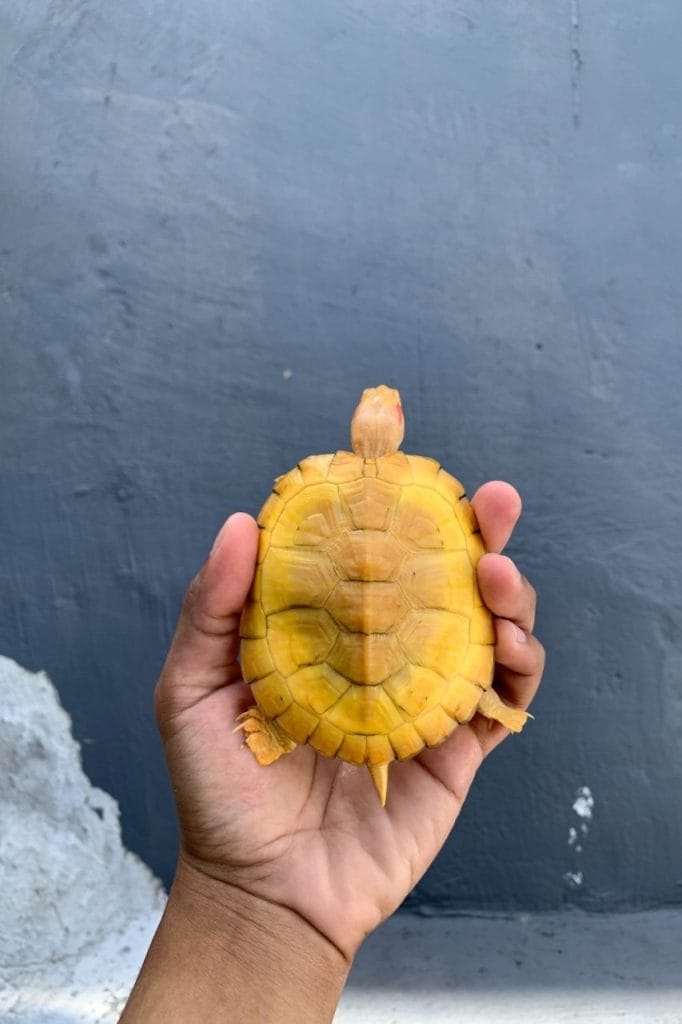
Special Considerations for Albino Eyes
Albino sliders can be more sensitive to light due to their pink eyes, and some owners notice their turtles prefer dimmer lighting at times.
One end of the tank should be made darker so they have options.
You can achieve this by:
– Adding plants or decorations that create shaded areas
– Using a tank background on one side
– Positioning the lights toward one end rather than centered
One owner mentioned their albino would swim to the darker end after intense basking sessions, like taking a break from bright screens.
Common Lighting Mistakes
Mistake #1: Thinking glass blocks UVB.
You can’t just place your tank near a window and call it a day—glass blocks almost all UVB rays.
Mistake #2: Using colored bulbs.
NEVER use colored lights (red, black, blue) with your turtle’s enclosure—even at night. These negatively affect turtle mental health since their eyes are sensitive to color.
Mistake #3: Not replacing bulbs on schedule.
Fluorescent UVB bulbs last 6-10 months. After that, they still produce visible light but UVB output drops dramatically.
Mark your calendar when you install a new bulb and replace it on schedule.
Mistake #4: No baseline lighting.
UVB lamps and heat lamps don’t produce enough visible light to replicate daytime illumination.
Add a 6400K full-spectrum LED to further illuminate your enclosure—helps with turtle mental health and is essential for live plants.
Many of these mistakes aren’t unique to albino sliders—our article on top 10 mistakes to avoid when raising a pet turtle covers additional critical errors that affect all turtle species.

Water Quality: The Silent Killer
This is where people think they can slide by with minimal effort.
They can’t.
Dirty water will kill your turtle faster than almost anything else.
Why Water Quality Matters So Much
Red-eared sliders spend most of their time in water.
They eat in it, poop in it, swim in it, and basically live in it.
That water gets disgusting FAST.
Poor water quality causes ear abscesses, respiratory infections, shell rot, and a whole host of other problems.
One vet I read about said water quality issues are the number one reason turtles end up in their office.
Filtration: Non-Negotiable
Invest in a quality filter rated for at least 2-3 times your tank’s volume.
So if you have a 75-gallon tank, get a filter rated for 150-225 gallons.
Why oversized? Because turtles are way messier than fish.
They’re basically living in their own toilet.
External canister filters are best for turtle tanks.
They’re powerful, handle large volumes, and are easier to maintain than internal filters.
Popular brands include Fluval, Eheim, and Aqueon.
Yes, good filters are expensive—$100-300 depending on size.
But this is not where you want to cheap out.
Types of Filtration
Mechanical filtration: Removes large debris like poop and uneaten food using sponges or filter floss.
Biological filtration: Encourages growth of beneficial bacteria that break down toxic ammonia and nitrites into less harmful nitrates.
Chemical filtration: Uses activated carbon to remove some chemicals, though it has limited lifespan.
You want a filter that does all three, with emphasis on mechanical and biological.
Water Changes: Still Necessary
Even with a great filter, you still need regular water changes.
Change 25-30% of the water every 1-2 weeks.
Some people with smaller tanks or multiple turtles need to do it weekly.
With larger tanks (100+ gallons) and powerful filtration, you might stretch it to 2-4 weeks.
But don’t push it.
One forum member mentioned their water looked crystal clear but when they tested it, nitrates were through the roof.
Water can LOOK clean and still be toxic.
Signs Your Water Needs Changing
– Cloudy water
– Bad smell (like sewage)
– Green tint from algae
– Greasy film on surface
– Turtle acting lethargic or refusing to eat
If you see any of these, do a water change immediately.
Making Water Changes Easier
For a 90-gallon tank, a 30% water change means moving 27 gallons.
That’s a LOT of trips with a bucket.
Use a Python No Spill Clean and Fill system—it connects to your sink and makes water changes way easier.
Alternatively, use a siphon to drain water and refill with a hose.
Always use a water conditioner like Zoo Med ReptiSafe to neutralize chlorine and chloramines.
Tap water has chemicals that can harm your turtle and kill beneficial bacteria.
Filter Maintenance
Clean your filter every 2-4 weeks depending on how dirty it gets.
Turtles are messy, so filters clog faster than with fish.
When cleaning:
– Rinse filter media in old tank water (NOT tap water, which kills beneficial bacteria)
– Replace mechanical media (sponges, pads) every few months
– Never replace all media at once or you’ll crash the beneficial bacteria colony
– Check impellers and clean them if water flow seems weak
One owner described coming home to find their filter overflowed because it got clogged and they didn’t catch it.
Water all over the floor, turtle freaking out.
Not fun.
Pro Tips
Feed in a separate container: Some people feed their turtles in a plastic tub, then return them to the main tank after eating and pooping.
Keeps the main tank WAY cleaner.
Bare bottom tanks: No substrate means less stuff to trap waste.
Regular filter cleaning: Don’t wait until it’s clogged.
Get a water test kit: Test pH, ammonia, nitrites, and nitrates periodically to catch problems early.
Feeding: What Actually Works
The Basic Formula
Aim for 25% pellet food, 50% green vegetables, and 25% animal protein.
Young sliders eat more protein, while adults should shift toward more vegetation.
As they age, their digestive system changes to handle more plant matter.
Best Foods to Offer
Pellets:
Use quality brands like Omega One or Mazuri to prevent shell pyramiding.
Shell pyramiding is when the shell grows in weird lumpy patterns instead of smooth—it’s caused by overfeeding protein and not enough variety.
Pellets should make up about 25% of the diet, not the whole thing like some pet stores suggest.
Vegetables:
Dark green vegetables, water lettuce, anacharis, carrots, squash.
Romaine lettuce (not iceberg—that’s basically water with no nutrition).
Dandelion greens, collard greens, turnip greens.
You can also grow aquatic plants like water hyacinth and duckweed in the tank for them to munch on.
Protein:
Earthworms, crickets, waxworms, cooked beef liver, lean chicken, high-quality canned cat food.
Avoid feeding goldfish regularly—they’re fatty and can carry parasites.
Occasional treat? Fine. Daily diet? No.
Treats:
Bits of strawberry or watermelon.
Keep fruit minimal though—high sugar content.
Feeding Schedule
Feed daily, and make sure they eat in the water—it helps with digestion.
Some people feed adults every other day or every 3 days, but continue with smaller portions daily.
Don’t overfeed even if they beg like dogs.
Red-eared sliders have voracious appetites but obesity is a real problem.
They’ll act like they’re starving even right after eating.
It’s a survival instinct—in the wild, they don’t know when the next meal is coming.
What If Your Albino Won’t Eat?
This happens more with albinos.
Because they’re albino, they might have trouble seeing things as food.
Try “real” foods like earthworms or pieces of cooked chicken to tempt them.
Wiggle the food in front of them to get their attention.
Also check that your water temperature is right—cold water kills appetite fast.
If they’re not eating and water temp is correct, check for other symptoms:
– Lethargy
– Refusing to swim
– Mucus around nose/mouth
– Puffy eyes
These could indicate respiratory infection or vitamin A deficiency.
Time to see a vet.
Calcium Supplements
Place a cuttlebone in the tank (found in the bird section of pet stores).
Turtles need calcium for strong shells and bones.
UVB lighting helps them process calcium, but they still need calcium in their diet.
Cuttlebone dissolves slowly in water and the turtle can nibble on it as needed.
Common Health Problems
Respiratory Infections
Symptoms include lethargy, lack of appetite, refusal to swim, wheezing, mucus, and swollen eyes.
Causes include poor water quality, low temperatures, or vitamin A deficiency.
Treatment involves:
– Improving tank hygiene
– Maintaining water at 78-82°F
– Basking spot at 90-95°F
– Vitamin A supplements
– Quarantine infected turtles
If symptoms persist beyond two weeks, you need a vet and antibiotics.
Don’t try to tough it out—respiratory infections can kill turtles.
Metabolic Bone Disease (MBD)
This shows up as soft shells, limb deformities, or shell deformities.
It happens when turtles don’t get enough UVB, calcium, or are fed only pellets.
The good news? It’s treatable by a vet if you catch it early.
Prevention is way easier than treatment though.
Proper UVB lighting + calcium supplementation = no MBD.
Vitamin A Deficiency
This causes puffy eyes and other issues.
Drops won’t work—the turtle needs to absorb vitamin A orally or through injections.
If they’re not eating, they can’t get vitamin A from food.
Vet visit required.
Shell Rot
Bacterial or fungal infection of the shell caused by poor water quality or injuries.
Symptoms:
– Soft spots on shell
– Discolored patches
– Foul odor
– Peeling scutes
Treatment involves cleaning the shell, improving water quality, and sometimes antibiotics.
Don’t ignore it—shell rot can penetrate deep and infect bone.
Ear Abscesses
Swellings on one or both sides of the head.
Commonly caused by poor water quality.
These will not resolve on their own and must be treated by a veterinarian.
Vet has to drain the abscess and prescribe antibiotics.
Lifespan and Long-Term Commitment
Albino red-eared sliders can live 20-40 years with proper care.
Most live between 20-30 years.
That’s longer than most dogs.
Think about where you’ll be in 30 years and whether you’re ready for that commitment.
Will you still be able to maintain a 100-gallon tank when you’re moving apartments? Going to college? Starting a family?
These aren’t goldfish you can flush when you get bored.
They’re intelligent animals that recognize their owners and have personalities.
Behavior Quirks
These turtles are social and often swim up close expecting to be fed.
They’ll do this frantic swimming dance when they see you approach the tank.
It’s adorable but also means they’re food-motivated little opportunists.
Normal behavior includes basking for long periods when the light is on, then swimming around when it’s off.
In the wild, they stack on top of each other while basking.
Like a turtle pyramid.
They “slide” off at the slightest sound, hence the name “slider.”
If you startle them while basking, they’ll bolt into the water like you just set off a fire alarm.
Brumation (Not Hibernation)
Red-eared sliders don’t hibernate—they brumate, becoming less active but still surfacing for air.
This usually happens when temperatures drop below 50°F.
During brumation:
– They don’t eat
– They don’t defecate
– Breathing slows down
– Activity hits extreme low
Most people don’t let their pet sliders brumate because it’s tricky to manage indoors.
You need stable cold temperatures (50-55°F) and proper conditions.
If you keep their tank heated year-round, they won’t brumate.
Where to Get One
You won’t find albino sliders at every pet store—look for reputable specialty breeders.
Make sure they’re captive-bred and come with a health guarantee.
Avoid sketchy online sellers or anyone who can’t show you proper documentation.
Red flags:
– No health guarantee
– Won’t show you photos/videos of the actual turtle
– Prices way below market (if it seems too good to be true, it is)
– Poor communication
– Can’t answer basic care questions
Expect to pay $50-200+ for a baby albino slider depending on quality and genetics.
Some specialty morphs (like lemon lime albinos) cost even more.
Setup Costs: The Reality Check
Let’s talk money because nobody warns you about this.
Initial setup costs:
– Tank (75-100 gallon): $100-300
– Filter (canister): $100-300
– UVB fixture + bulb: $50-100
– Heat lamp + bulb: $20-40
– Basking platform: $20-50
– Water heater: $20-30
– Thermometers: $10-20
– Water conditioner: $10-15
– Food: $20-30 initially
– Decorations/plants: $20-50
Total initial investment: $370-$955 minimum (not including the turtle itself)
Ongoing monthly costs:
– Food: $10-20/month
– Electricity (lights, filter, heater): $15-30/month
– Water conditioner: $5-10/month
– Filter media replacements: $10-20/month
Total ongoing: $40-80/month
Annual costs:
– UVB bulb replacement (2x/year): $30-60
– Heat bulb replacement: $10-20
– Vet checkup (recommended): $50-150
This is not a cheap pet.
And if your turtle gets sick, vet bills can easily hit $200-500+ for treatment.
Final Thoughts
Albino red-eared sliders are stunning, but they’re not beginner pets.
The care requirements are the same as regular sliders (which already require a lot), plus you need to be extra careful about lighting and watch for health issues.
If you’re willing to invest in a proper setup—big tank, quality filter, correct lighting, heated water—you’ll have a unique pet that can live for decades.
Just don’t half-ass it because “they look cool.”
These turtles deserve better than that.
They’re intelligent, surprisingly personable, and genuinely fascinating to watch.
But they need commitment.
If you’re not ready to maintain a 100-gallon ecosystem for 30 years, get a goldfish instead.
If you ARE ready? Welcome to the albino slider club.
It’s a small, weird club, but we’re dedicated.
Ready to set up your albino slider’s dream home? Start with the tank size and work your way up to the lighting—get the basics right and everything else falls into place. Your future turtle will thank you.

About Author
Muntaseer Rahman started keeping pet turtles back in 2013. He also owns the largest Turtle & Tortoise Facebook community in Bangladesh. These days he is mostly active on Facebook.


